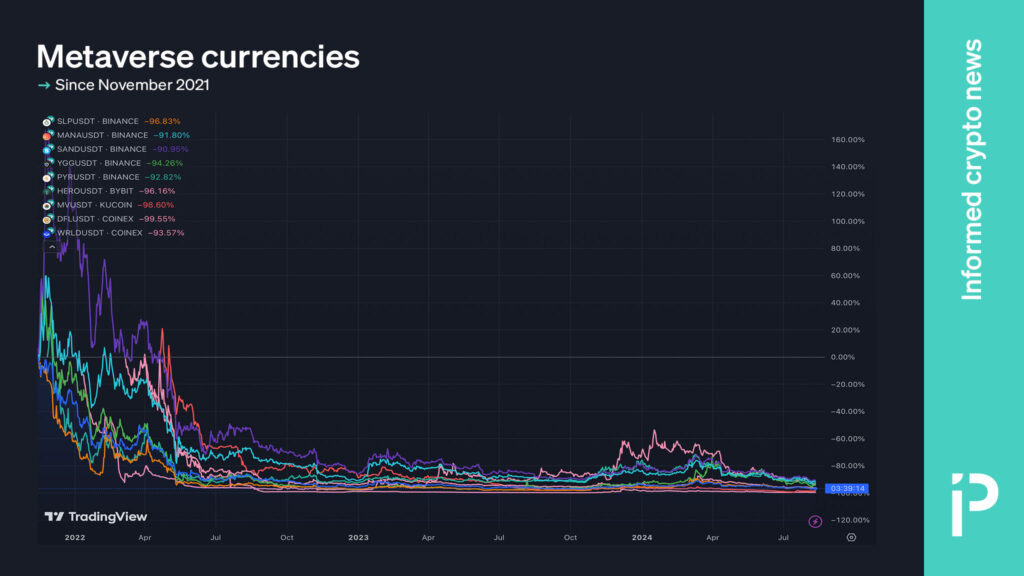AI Starting to Feel Like a Ponzi Scheme
Big tech and startups alike promise wild results... And are demanding high prices and valuations to achieve it.
From $2 LLM calls to wild promises of Artificial General Intelligence (AGI, the technology term for sentient AI), it feels like every big tech vendor and larger startups are demanding top dollar for future AI promises. Pundits are starting to call out the hype, punching holes in generative AI and agentic AI alike, in some instances going so far as to call the current AGI trend a hoax.
The AI hype bubble bursting has been an ongoing conversation for over a year. During this time, I have been quick to point out that AI hype often differs from pragmatic implementation. In some instances, I have gone so far as to call new generative AI and AGI promises blatant and disingenuous overhype.
But now we are seeing incredible valuations, massive data center investments, and, at a minimum, extraordinary pricing. For example, Salesforce is asking for as much as $2 per LLM call for Agentforce implementations, justifying the expense with its Trust Layer. Salesforce also requires customers to sign up for Data Cloud to access Agentforce. OpenAI plans to release a “genius-level” $20,000 a month AI agent. These are just two pricing examples in a growing trend of astronomical AI pricing.
It’s starting to feel suspect, even like a Ponzi scheme.
According to the SEC, in a ponzi scheme, “organizers often promise to invest your money and generate high returns with little or no risk. But in many Ponzi schemes, the fraudsters do not invest the money. Instead, they use it to pay those who invested earlier and may keep some for themselves.”
The parallels to the current AI landscape are concerning. We're seeing spectacular promises of future returns, massive capital requirements, and money flowing primarily to early investors and founders rather than into sustainable technology development that delivers consistent customer value.
So what is going on?
Why Is This Happening?
The Metaverse bubble popped and came back to earth after 2021, as demonstrated by currency trading (image via protos).
Much of the generative AI hype we have seen to date is about promising potential and often theoretical breakthroughs to drive up startup valuations. While startups are using business and trade media to propagate the hype, the actual intended audiences are existing and potential investors. General business sector conversations, customer excitement, and actual adoption (hello, ROI) help fuel these valuations.
The current AGI hype, especially when propagated by venture-funded startups, is definitely about increasing valuations for future investments. Higher dollar investment rounds drive up founders’ and prior investors’ returns and, in some instances, allow them to cash in.
Unfounded valuations and extraordinary pricing point to paying earlier investors and founders. Thus, the Ponzi scheme feeling. Of course, this is a normal start-up risk/reward model, too. Still, the overwhelming size of the hype, valuations, and pricing feels way off.
What about the high costs of AI? It may simply be that we are looking at attempts to recoup prior investments for big tech companies and investors. But as we have seen in the past, the high cost of AI technology has been a deterrent to adoption. Both Microsoft and Google have folded their prior $20-a-month enterprise AI seat licenses for Copilot and Gemini into their general Office and Workspace offerings, respectively.
The problem is that the technology keeps failing to meet the promise. The reality is that LLM technology is leveling out and still has nagging quality issues.
To date, much of what has been promised involves scaling LLMs across gigantic data centers, fueling another wave of investments and another dimension to the AI bubble. Still, time-in-and-time-out releases have failed to achieve a much-discussed breakthrough. New players like DeepSeek have shown that the scaling approach is not required to achieve current results.
In the case of AGI and, to a lesser extent, agentic AI, the promise is largely based on LLM technology evolutions. Thomas Wolf, Hugging Face’s co-founder and chief science officer, called some parts of the LLM as AGI vision “wishful thinking at best.”
As time has progressed, many in the sector believe AGI breakthroughs will require a different set of technologies altogether. Similarly, realizing the promise of agentic AI will require significant development work. This painfully obvious inability to achieve promised results creates increasing distrust in new LLM-based AI “breakthroughs” and more risk for investors.
A Technology In Search of a Problem
The Ponzi-like qualities of the current generative AI landscape become even clearer when examining how the technology is being marketed versus how it functions. Many AI companies are redirecting attention from failing to deliver on initial promises to new, rebranded agentic AI and AGI initiatives. This pattern of moving the goalposts keeps investment flowing despite underwhelming results.
Entering the fourth quarter of last year, LLMs, or the generative AI boom, was deep in the trough of disillusionment, Gartner’s label for a post-hype bubble bottom. Criticisms of continuing hallucination problems and low ROI for early adopters plagued startups.
The agentic AI hype wave rose and is still cresting, a redirect for many AI startups that allowed them to put a new shine on their peaked technology. Led by Salesforce’s launch of Agentforce, agentic AI puts a pragmatic use case approach — stringing together several tasks in an autonomous workflow — that would benefit businesses. Still, while some agents are out of the box, for it to be truly effective, most vendors and businesses are required to identify and define workflows, build agents, and then test and refine them.
This process illustrates a general issue with how generative AI is marketed, one that I have to help every single one of my clients work through. LLMs and generative AI tools, in general, are capable technologies that have not been mapped to specific problems. Generative AI algorithms are not actual business solutions.
Rather, they are tools for developers and their customers to apply to help resolve their specific problems. In reality, generative AI companies provide algorithms for the software developer community. Their marketing of algorithms moves beyond potential what if scenario building to actual business solutions and, often, empty promises. This is the crux of the problem.
The Good News: Generative AI Has Value
Sephora’s Virtual Artist and other “try and buy” complex ML/generative AI models have been very useful for consumer retailers.
Using LLM technology is perfectly appropriate and useful for business. Many use specific software vendors that are finding ways to integrate LLMs into their applications. They create specific tools to resolve problems. For example, Jasper AI tunes into specialized LLM solutions to help marketers create content.
Individual organizations are finding ways to use LLM technologies in their processes, either as stand-alone solutions or as part of larger AI models and, theoretically, agentic workflows. Increasingly, organizations have decided to rely on software vendors to deliver solutions rather than build them.
Creating custom solutions quickly becomes expensive. Low-code, no-code platforms like Agentforce still usually require some technical talent, such as a Salesforce engineer or a developer for more generalized solutions. New solutions like Fuel IX’s low-code, no-code agentic AI builder are making it easier to build solutions.
In short, the complexity of mapping existing generative AI into larger solutions is still being worked out. The technology is robust enough to resolve problems, but when applied, it often requires refinement and other, more traditional AI models.
The real solutions are still being built. It’s early.
Further complicating business perceptions with overwrought, even disingenuous hype to build unicorn-level valuations and recoop investments is not helpful, in my opinion. Silicon Valley startups would better serve their customers, and by default, investors, founders, and employees, focusing on more grounded product marketing and solution sets. Build real value with solid solutions.
I am not holding my breath. Instead, I expect more hype and perhaps even a true financial bubble burst for AI startups. Sooner or later, investors will move on to more tangible solutions that will yield better financial results.
Past Reading
Does AGI Really Matter or Just More Hype?
Artificial general intelligence or AGI will arrive within five years, says AI industry marketing engines at NVIDIA, OpenAI, and others. Should enterprise executives care, or is this another hype distraction?
Hold Your Sora Horses
Open AI Sora, a text-to-video generator, has captivated the imagination of online AI influencers, sparking a wide range of conversations. From implications for the video creation market to somewhat bombastic societal impacts and everything in between,











Thank you for the post!
You're right, GenAI excels in isolated tasks (like image synthesis / text generation), but integrating it into end-to-end systems requires hybrid architectures. Traditional ML (e.g., decision trees, regression, or rule-based NLP) is often more stable, especially for edge cases. In other words, it's not that GenAI isn’t powerful, it’s that we’re still learning how to partner with it wisely.
Unfortunately, I think some people see this as the ultimate solution.
It’s an amazing tool, but if you just implement parts of it without constantly
assessing, reassessing, updating, and adapting, that’s where the problem lies.
Even with writing, you have to edit, refine, and make sure it makes sense and that what you're saying is actually accurate.
Case in point: I asked ChatGPT yesterday when April Fools’ Day was,
and it confidently told me Monday… when April 1 is actually Tuesday.